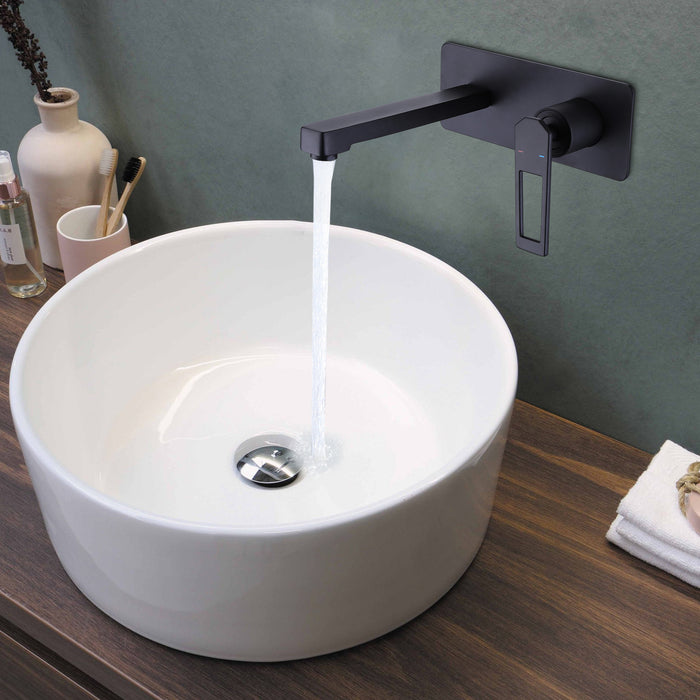Introduction
Faucets are not just functional elements in our homes; they are design statements that contribute to the overall aesthetic. In this comprehensive guide, we delve into the world of faucets, focusing on the intriguing comparison between two popular choices: Wall-Mounted Faucets and Traditional Faucets. By understanding the pros and cons of each, you can make an informed decision to enhance both the functionality and style of your space.
Wall-Mounted Faucets
Definition and Explanation
Wall-mounted faucets are fixtures that attach directly to the wall, eliminating the need for a deck or countertop. This design choice offers a sleek and contemporary look, often associated with modern and minimalist aesthetics.
Pros
-
Contemporary and Space-Saving Design:
- Wall-mounted faucets contribute to a modern and uncluttered appearance, making them an excellent choice for contemporary bathroom and kitchen designs.
- The absence of a deck or countertop allows for more open space around the sink area, creating a sense of spaciousness.
-
Easy Cleaning Around the Sink Area:
- With no countertop or deck obstructing access, cleaning around the sink becomes a breeze. This is particularly advantageous for maintaining a hygienic and visually appealing space.
-
Customizable Height for Modern Aesthetics:
- Wall-mounted faucets often come with adjustable height options, providing flexibility to customize the fixture according to personal preferences and the design requirements of the space.
Cons
-
Potentially Higher Installation Costs:
- Installing wall-mounted faucets may require modifications to the plumbing within the wall, potentially leading to higher installation costs compared to traditional faucets.
-
May Require Professional Installation:
- Due to the need for adjustments to plumbing behind the wall, installation of wall-mounted faucets is often best handled by professionals. DIY installation may not be feasible for everyone.
-
Limited Compatibility with Certain Sink Styles:
- Not all sinks are suitable for wall-mounted faucets. The compatibility of the sink style must be carefully considered during the selection process.
Traditional Faucets
Definition and Explanation
Traditional faucets, also known as deck-mounted or countertop faucets, are the more conventional fixtures that sit atop the sink or countertop. They come in a variety of styles, making them a versatile choice for different design preferences.
Pros
-
Timeless and Versatile Design:
- Traditional faucets boast a timeless design that suits a wide range of decor styles, from classic to transitional. Their versatility makes them a popular choice for various kitchen and bathroom settings.
-
Wide Range of Styles and Finishes Available:
- Traditional faucets come in an extensive array of styles, finishes, and configurations, allowing homeowners to choose a fixture that complements the overall design theme of their space.
-
Generally More Affordable and Easier to Install:
- Traditional faucets are often more budget-friendly and easier to install, making them an attractive option for those seeking a cost-effective and straightforward upgrade.
Cons
-
Limited Space Around the Sink for Cleaning:
- The presence of a deck or countertop around traditional faucets may create some challenges when cleaning around the sink. This is especially true for intricate sink designs or tight spaces.
-
Potential for Water Splashing, Especially in Shallow Sinks:
- In shallow sinks, traditional faucets may lead to water splashing, potentially causing inconvenience and requiring more care during use.
-
Fixed Height May Not Suit All Design Preferences:
- Unlike wall-mounted faucets, traditional faucets have a fixed height, which may not align with the preferences of those seeking a more customizable and modern look.
Comparison
Design and Aesthetics
- Contemporary and space-efficient, perfect for modern aesthetics.
Traditional:
- Timeless and versatile, suitable for a wide range of design styles.
Cleaning and Maintenance
Wall-Mounted:
- Easy cleaning around the sink due to the absence of a countertop.
Traditional:
- Potential for limited space and water splashing, requiring careful maintenance.
Installation and Cost
- Potentially higher installation costs due to adjustments to plumbing within the wall.
Traditional:
- Generally more affordable and easier to install, making them a cost-effective option.
Customization
- Adjustable height options for a personalized and modern look.
Traditional:
- Wide range of styles and finishes available for diverse design preferences.
Conclusion
In the great debate of wall-mounted faucets vs. traditional faucets, the ultimate choice depends on your specific needs, preferences, and the overall design aesthetic you aim to achieve. Wall-mounted faucets exude contemporary elegance, offering space-saving solutions and customizable heights. On the other hand, traditional faucets showcase timeless versatility, providing a wide range of styles and finishes to suit various design themes.
As you embark on the journey of upgrading your home, consider the pros and cons outlined in this guide. Whether you lean towards the sleek and modern appeal of wall-mounted faucets or the timeless charm of traditional fixtures, your choice will undoubtedly contribute to the overall beauty and functionality of your space. Make your decision wisely, and let your faucet become a statement piece in your home design.















